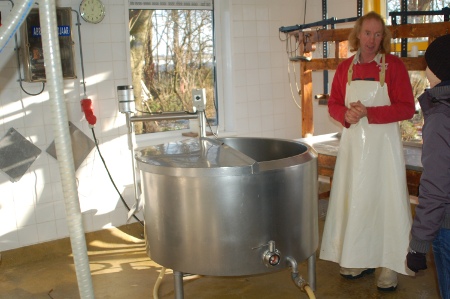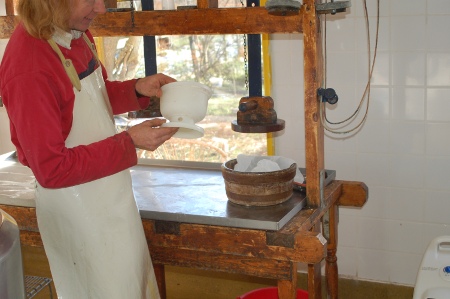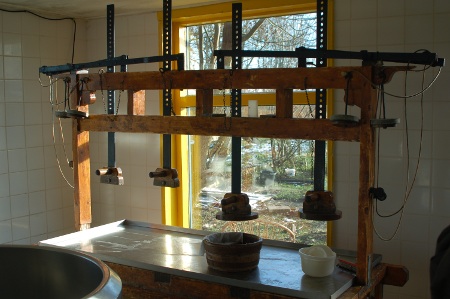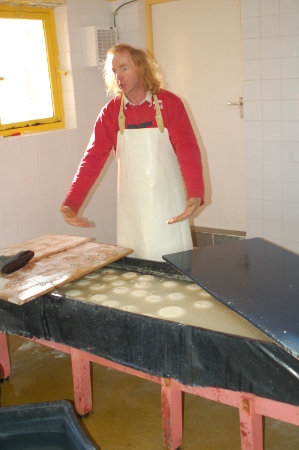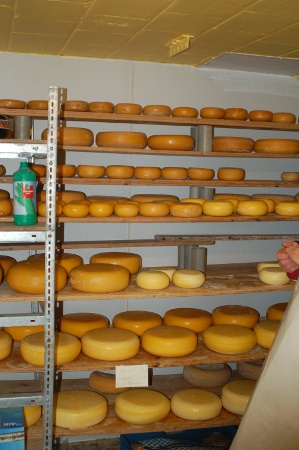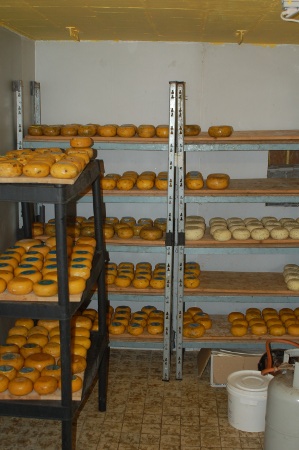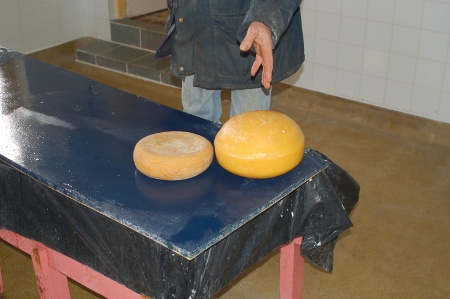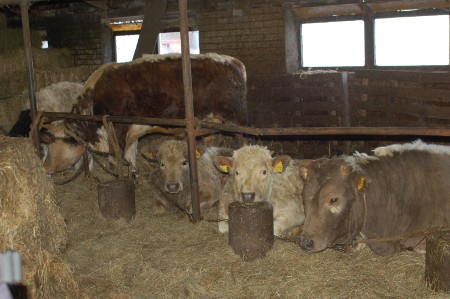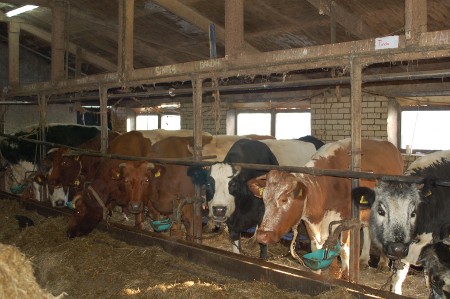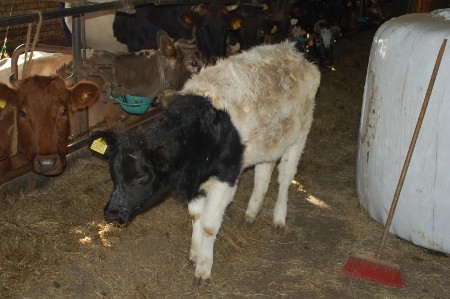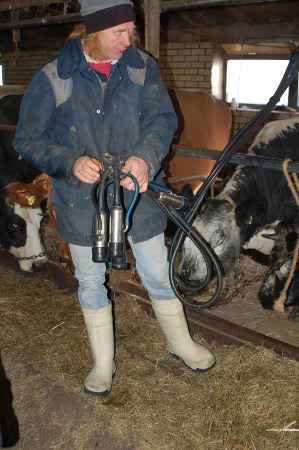You can find an updated list of Paquebot’s seeds here.
Peace Seeds, Peace Seedlings, Alan Kapuler and family
Alan Kapuler just sent me an email to tell me about the new 2011 seed listings for Peace Seeds and Peace Seedlings. Peace Seeds is run by Al and Linda Kapuler. Peace Seedlings is run by Dylana Kapuler and Mario Dibenedetto.
The websites are run by their close friend, Chinese agronomist Bi Jihuan.
It’s a pretty special and rare thing when a plant breeder offers part of their own seed collection for sale. Please consider supporting their work by buying and growing their seeds!
Blogs, Catching Up
I have several posts to make over the next day or two as I catch up from the Christmas holidays. First, a few blogs and posts for your reading pleasure.
Mike of Subsistence Pattern has been a reader and commenter here for a long time. One of the things that really stands out about his blog are the discussions he cultivates among his readers. If you want to chat with him and other well known veggie bloggers, it’s a great place to go.
Laura of Mas du Diablo in France has for many years been an active participant in the Blogger Seed Network here, as well as actively blogging about her garden and cooking. I recently exchanged some emails with here, and got some links to new blogs she working on, showing off her paintings, more paintings and cooking. Imagine 4 blogs! I have a hard enough time keeping up with this one.
Leigh of The Extreme Gardener recently posts about her experiences growing TPS (True Potato Seeds). Great post!
New Links!
Sal just sent me an email to tell me about his new blog Sweet Rock Farm, and garden/farm on Gabriola Island off the BC coast in Canada. He has a great plant trade list, including a number of fruit trees and vines. He’s now been added to the Seed Network here. Have a look at his blog, and stop by and say hi!
A fried of mine here in Holland, Anita, has a expat blog. It’s called Greetings from Holland. I keep meaning to mention it. I don’t often write about Holland, and in fact Anita and I were recently talking about that. She thinks I should write more about Amsterdam and the Netherlands, instead of all the difficult subjects I address here, and she’s probably right. Anita on the other hand writes a lot about Holland, including things about really interesting places she visits. She has a lot of great pictures. If you want to learn something about living in the Netherlands, hers is the blog to visit.
Finally, Randy who lives in North Carolina has a blog called Randy and Meg’s Garden Paradise. He also has an associated blog about his carpentry projects called the Liberal Handyman’s Blog. He has some really amazing photographs on his blogs, and his carpentry projects look really interesting.
Het Marlanner Kaashuis
Friends of ours, Leen and Lucie van Zelderen, own a cheese farm in Friesland. After spending years intending to ask for a tour, but never seeming to be in the right place at the right time with enough spare time, we finally made the trip up a few weeks ago. Steph and I really had a great time, and some friends from Amsterdam we took up with us also enjoyed themselves. It was a very bright and cold December day.
Leen is here in front of the vat where he makes the cheese. Milk is pumped into the vat, then he adds rennet which coagulates the milk into curds and whey. The curds are then cut into small pieces, or cottage cheese. This is then put into a cheese press and pressed into a rounds of cheese.
Leen and Lucie don’t make ordinary cheese, but rather have a philosophy of making the most natural product possible, in small hand made batches, with the highest possible respect for the health and well-being of the animals. The cheeses are certified organic and biodynamic, and his cows are completely ‘grass’ fed off his own land. I put grass in quotes, because in fact they are very proud of the biodiversity of grasses and other wild plants their cows eat, as many as 75 different plant species.
The tour lasted several hours, and I didn’t take notes. I’ve probably forgotten a few things, but I’ll try to summarize some of the important things here.
One of the things important in commercial cheese is uniformity. If you are a consumer in the US for example, and you buy Dutch cheese, it has to look and taste exactly the same as the last time you bought it, as well as the next time you buy it. Farmers add a number of different things to their cheese to ensure this, for example saltpeter as a purifying agent to kill any bacteria spores that may be present and change the flavor, or coloring necessary in the winter because cheese is whiter then.
Leen explained that they don’t make blue cheese, because if they did the bacteria spores would go everywhere, and everything would be blue.
Leen and Lucie don’t add anything to their cheese, and are proud that it tastes different from other Dutch or Fries cheeses, and that it tastes and looks different from one season to the next. In fact over the last few years that I’ve been eating the cheese, I don’t think it’s ever tasted exactly the same twice.
Leen spent quite a bit of time explaining the difficult relationship he has with the Dutch food safety inspectors. He’s inspected by different departments multiple times per week! Everything from the shape of the tiles on his wall, to the procedures he follows, are all inspected and laid out for him. He negotiates with them things like heating the milk to a certain temperature instead of adding a sterilizing agent. The biggest problem they face with these health inspections is they are all intended to be applied to large commercial operations, and no one gives any thought to people like them when they implement new rules and procedures.
In the picture above Leen is demonstrating the containers he presses the cheese in. The wooden container on the table was used by his great-grandmother for making cheese in, but isn’t legal anymore. The health inspectors would prefer he used stainless steel, but he uses the plastic ones he’s demonstrating.
If the wooden one gets scratched, it’s self healing. The wood will swell and fill the gap, or perhaps it needs to be lightly sanded. If the plastic ones get scratched, they can’t be repaired. Scratches in the plastic are a problem, because they can’t be properly cleaned. So what’s the advice of the health inspectors? Throw away the scratched containers and buy new ones. It’s like forcing him to be a consumer, and buy plastic crap from China, instead of locally available materials, possibly homemade, that can be used indefinitely.
Above is the full view of the cheese press they use. With the system of levers and weights, he can adjust the pressure applied to the various cheeses.
This is their brining vat, where the cheeses are soaked in salt water in order to remove the last traces of whey and impregnate the cheese with salt which are both important for preservation.
These are the various cheeses maturing in their storage room. Leen explained the importance of wooden planks. They act as a sort of moisture regulator and are breathable. It doesn’t matter what kind of wood is used as long as it’s wood. A material like plastic would promote mold. I’ve forgotten now what the acceptable range is, but Leen explained the importance of temperature. Too warm, and the cheese will spoil. Too cold, and the cheese won’t mature.
It’s part of the normal process of maturing that the cheese loses moisture, and you can see a number of the rounds are a little caved in at the top because of this. It’s also possible some bacteria will cause bubbles to form in the cheese, like how Swiss cheese is made, in which case the cheese rounds will swell. Often there is a sort of happy medium between the two. If a cheese round swells too much and develops too many holes, it will dry out faster and has to be eaten soon before it goes bad.
These racks hold the cheeses with herbs added.
Here Leen demonstrated the two extremes in cheese maturation, one dried out with few holes, and the other with lots of holes and air. Except for one developing holes and the other not, these are identical rounds of cheese.
The Boys and Girls
After touring the cheese workshop, we had a walk around the barn. Leen and Lucie now have 20 cows and steers.
Leen spent some time explaining how important he felt it was to have breeding steers on his farm. This is not the usual way anymore, as it’s much more economical to purchase semen and artificially inseminate the cows. The average life span of the steers on his farm is about 3 years, after which they are sent to the abattoir. Below are the steers, sitting down and taking a break. Between the cows and steers, you can see who does all the work on this farm!
The picture below are the cows, all lined up and full of milk.
I asked about the specific breeds they have, and the answer was they are just mutts. In the picture above you can pick out quite a few breeds if you know what you’re looking for… You can see their names are written on the wooden beam above them.
One of the things Leen explained was the importance of the horns. All cows have horns, and most farmers remove them because then the cows need less barn space. If you leave the horns on, the cows turn their heads from time to time and will hit one another. In general the horns are no problem, other than requiring a little extra space.
Leen feels very strongly that giving the cows more space is the best option, and in the picture above you can see all of his cows still have their horns.
Leen explained cow horns are not unlike a human finger. They have a coating of dead hard skin, not unlike a human finger nail. On the inside they are soft, living and very sensitive tissue. Cutting off a cow’s horn is not unlike cutting off a persons finger, and it’s not healthy for the cow. Leen feels very strongly that his cows are happier and healthier with their horns, and with the extra space they get in the barn.
While the other cows and steers had their own places and were chained, this calf was following us around during the tour. I’m not sure how old he was, but not very I guess.
Leen spent more time while we were in the barn explaining why the biodiversity in the plants the cows ate was so important. He referred to the cows as their own ‘pharmacists’ (apothekers) , which is actually a term that loses something in translation from Dutch. In olden times here pharmacists often offered herbal remedies as well as more potent drugs, and in fact that’s still something of a tradition even now. By calling his cows pharmacists, he meant it more in the sense of specialists in herbal remedies.
He says the cows are actually very choosy in what they eat, and they seek out plants according to their nutritional needs. If the cows are sick, they will seek out plants that can heal them. Leen says he actually spends a lot of time on the fence watching his cows eat, and thinking about the logic involved. There’s a lot more to it than just eating grass!
Above is Leen demonstrating the milking machine. He milks his cows twice a day. He says the more often you milk them, in principle the more milk you get, but he finds twice a day works best for him.
I have forgotten the numbers, but Leen explained in modern commercial dairies farmers prefer breeds of cows that peak early in their milk production. In this way, they can keep these cows for just a few years before slaughtering them and it’s more efficient, then cows that have a more uniform milk production over their lifetime. Leen and Lucie on the other hand prefer cows that have a more uniform milk production, and so the average age of their cows are much older than most commercial dairies. Looking at their lifespan as a whole, Leen and Lucie’s cows give more milk on average.
Everything else aside, their cheese is really delicious. If you are ever in the neighborhood of Dokkum, or one of the places in Friesland they have a farmers market stand (call them for information), be sure to buy some and give it a try!


